Your experienced Specialist Orthodontist in Adelaide
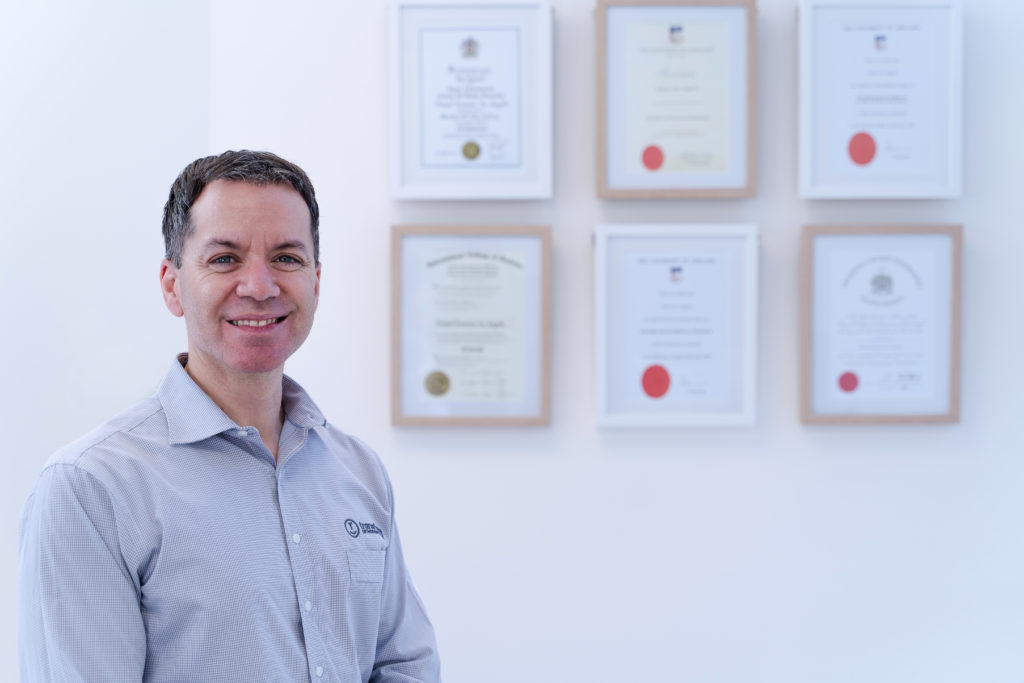
Thank you for choosing Transform Orthodontic Care! Orthodontic treatment is transformative but also a life-changing treatment that requires a strong relationship between patient and orthodontist. Let’s run through what you need to know about your orthodontic treatment.
I’ve been a Specialist Orthodontist in Adelaide for over 20 years. During that time, I’ve treated over 10,000 patients – that’s a lot of transformed smiles! But the success of any treatment largely depends on the understanding and cooperation of the patient. My team and I are here to guide all of our patients on their journey to a transformed smile.
We encourage all our patients to ask as many questions as they like, so they know what is expected and to help them make informed choices. Together we can achieve the smile you’ve always dreamt of!
My team

My team and I work together to achieve the best smile for each and every patient. Treatment is delivered by myself and our professional and caring team of qualified Clinicians who have degree or advanced diploma qualifications in Oral Health.
Our patients also get to know our Clinical Assistants, Treatment Coordinators and Administrative staff who all work as a team to deliver the care we pride ourselves on. Our patients get to know the entire team over the course of their treatment.
Braces and Clear Aligners
Whether you are having braces or clear aligner treatment, both treatment types are a really effective method of straightening your teeth and if needed, aligning your bite.
We have put together some videos to show you what a typical aligner appointment looks like, and what’s involved when you get your braces put on for the first time.
- A typical clear aligner check up appointment. In the video we check to see how Maria’s Invisalign treatment is going and showing her how to take her scans in the Dental Monitoring app.
- A typical “bands on” appointment is when you get your braces on for the first time. It usually takes about one hour.
- We show you how to clean your aligners and retainers – it’s super easy!
The benefits
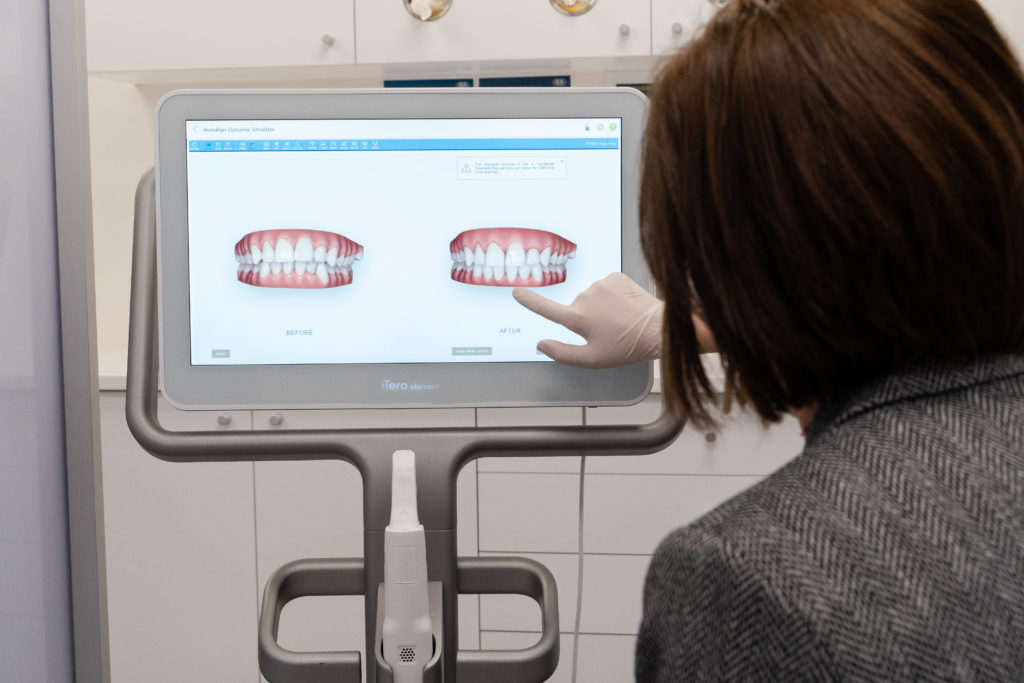
Orthodontics plays an important role in improving your oral health and creating a beautiful, healthy smile. Some of the many benefits may include:
- Increasing confidence and self-esteem
- Aligning the jaw correctly for optimal chewing function
- Less abnormal wear on teeth and gums
- Perfectly aligned teeth that are easier to clean
- Improved oral health
- Decreased chance of tooth decay
- Less likelihood of developing gum and bone disease
The risks
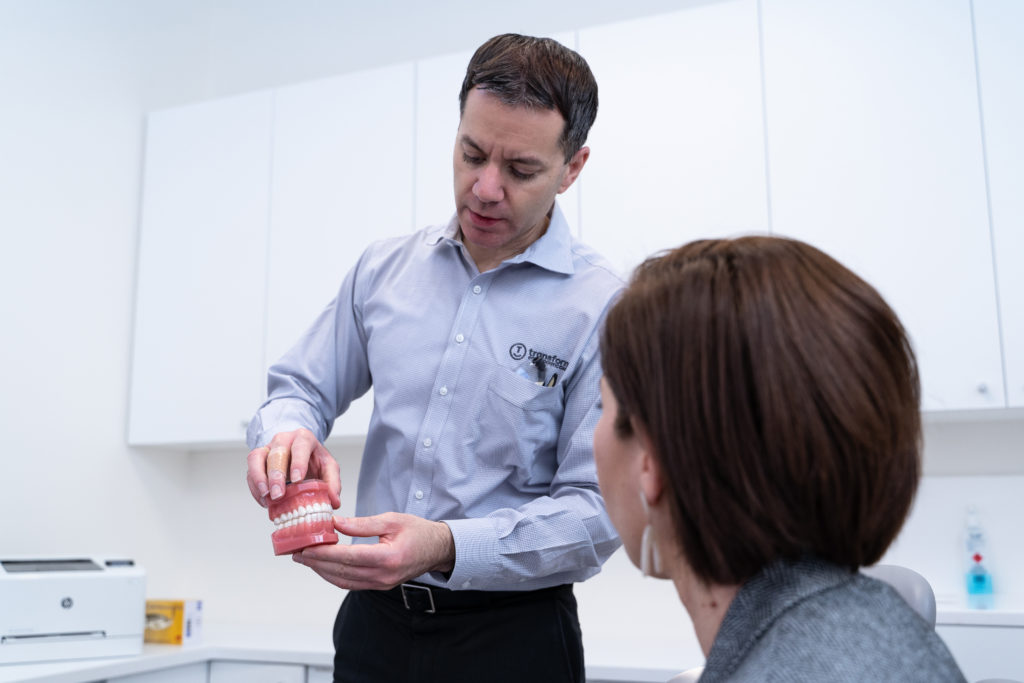
All forms of medical and dental treatment, including orthodontics, have some risks and limitations. Thankfully, any risks and complications during your orthodontic treatment are rare. And when they do occur, they are usually minor and easily fixed.
However, if you experience an emergency – like an injury to your mouth or teeth – please see your family dentist as soon as possible. It’s best to contact your family dentist first as we may not have the necessary materials needed to treat a tooth injury such as teeth that are displaced, fractured or have been knocked out. Don’t forget to let us know about your injury once you’ve seen your dentist.
If you’re unable to reach your family dentist or an alternative emergency facility, contact us and we will try to assist you in locating someone to help you.
If the orthodontic appliances are dislodged or displaced, we will need to replace or adjust them as soon as possible.
Treatment Results
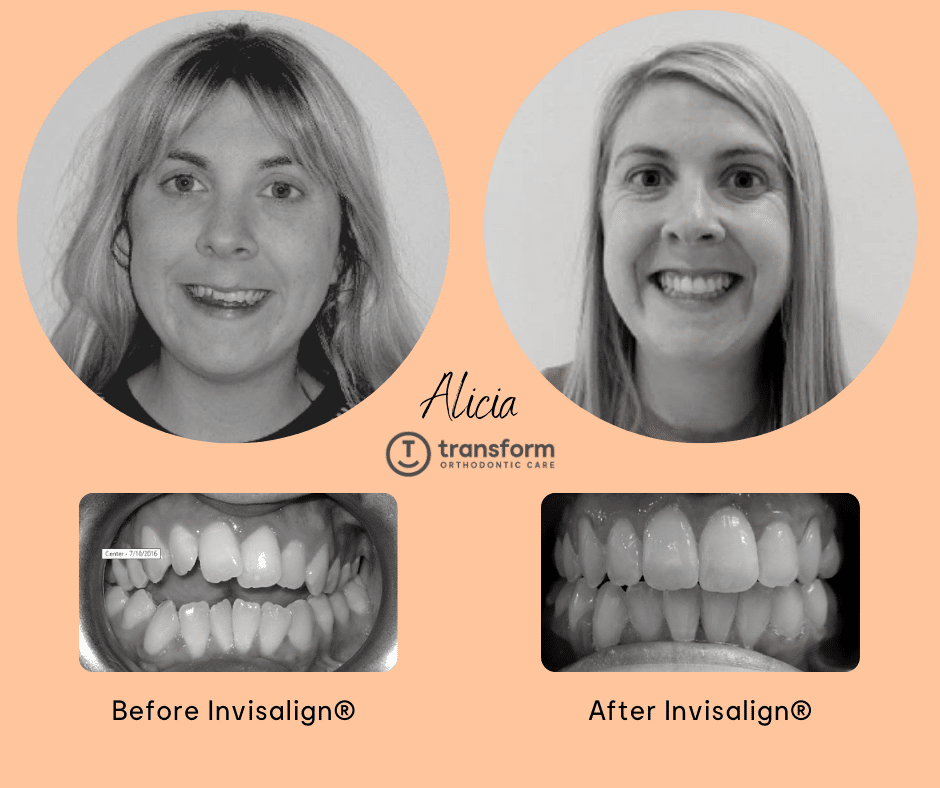
My team and I are committed to doing everything possible to get the best results for every patient. That’s why we come to work every day! We try our best to make sure our patients are happy with the results but we can’t always guarantee that everyone will be happy. Sometimes not all complications or consequences can be anticipated. Cooperation throughout treatment is really the best guarantee of achieving the best results.
The success of each individual treatment depends on a few key things:
- Keeping and attending appointments
- Maintaining good oral hygiene
- Avoiding damage or breakages to orthodontic appliances
- Wearing elastics as prescribed
- Following orthodontic instructions carefully
Unfortunately, failure to do these things may mean we need to change your treatment, or suspend it all together which we always try and avoid of course.
Treatment time

Myself and my Treatment Coordinator will discuss the expected orthodontic treatment time with you during your first consultation. It will also be noted on your treatment plan.
The time it takes to complete treatment and the quality of the end result can be impacted by several things, such as:
- Poor cooperation in wearing your appliance. For example, not wearing your aligners for 22 hours per day.
- Not wearing the prescribed elastics
- Poor oral hygiene
- Broken appliances
- Not scanning into Dental Monitoring
- Missing appointments
By following your treatment plan and working in partnership with my team and I, we can achieve amazing results in the shortest time possible!
Oral hygiene
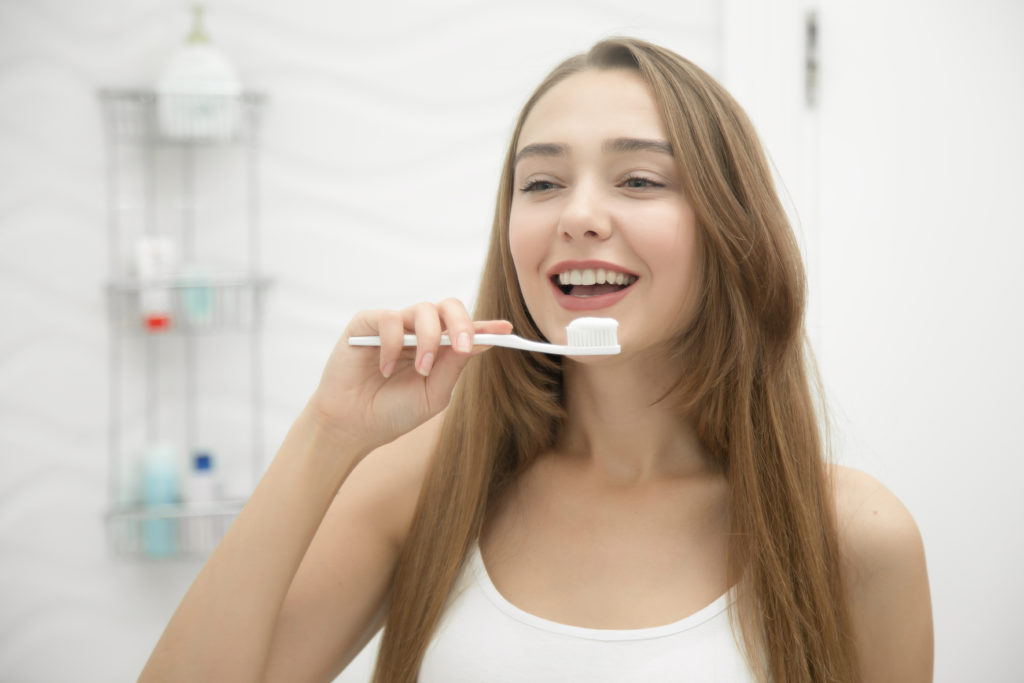
Good oral hygiene is so important to the end result of your orthodontic treatment. When you start treatment with us we run you through how to take care of your oral hygiene whether you have fixed braces or removeable clear aligners.
Gum disease and permanent markings on the teeth – otherwise known as decalcification – can occur if your diet is high in sugar or if you don’t clean your teeth properly.
Food is easily trapped in braces and clear aligners. If this food isn’t removed, then plaque forms. Plaque is the beginning of serious tooth decay and gum disease. Clean your teeth after every meal and snack using a soft toothbrush. It’s also important to floss in between teeth to remove any hidden plaque.
It’s easy to clean your Invisalign or Spark clear aligners. Simply remove them from your teeth and brush with water and your toothbrush. You can learn how to clean your braces here.
Visit your dentist every six months for regular dental examinations to ensure optimal oral hygiene. Take our ‘Dentist check up’ card with you, ask your dentist to sign and we’ll reward you with a movie voucher!
Diet

Follow a well-balanced diet for a healthy orthodontic result. Try to reduce your intake of sugar, such as lollies, soft drinks and cakes. I recommend limiting hard and crunchy foods like apples, carrots, or crunchy bread. You should completely avoid:
- Crunchy snacks such as popcorn and chips
- Chewing on ice
- Foods that are sticky – chewing gum or lollies, for example.
- Anything hard like nuts or hard lollies
- Foods that require biting into, like corn on the cob.
Be careful to not damage your braces by biting with your front teeth or into hard foods, as this will make your treatment time longer. Foods like applies and carrots can be cut into bite sized pieces.
Clear aligner patients can simply take their aligners out for each meal. Once the meal is finished and teeth are brushed the clear aligners can be reinserted. That way, they can ensure that their aligners are worn for 22 hours per day.
Relapse
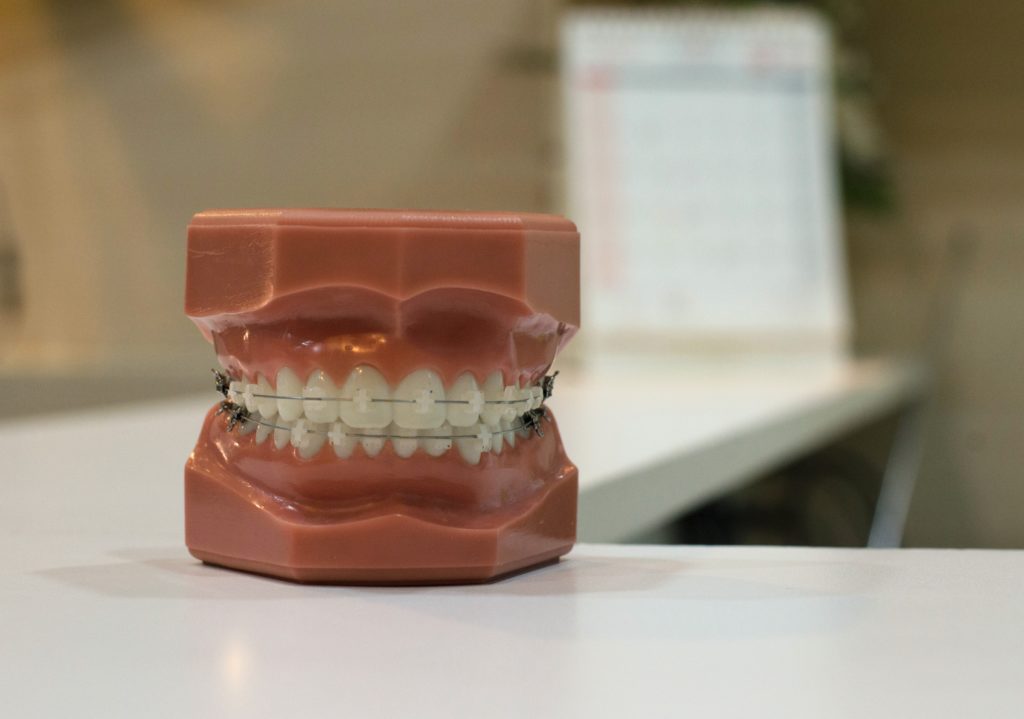
Did you know that your teeth have a memory? It’s true! Your teeth may try to move back into their original position after your orthodontic treatment (annoying, I know). This is why wearing your retainer after your braces or clear aligner treatment is so important.
Throughout your life, your bite can change from various causes, such as:
- Eruption of wisdom teeth
- Growth or maturational changes
- Mouth breathing
- Playing musical instruments
- Other oral habits.
In most cases, the retention phase of your treatment will guard your smile against relapse. You may need to wear removable and/or fixed retention appliances, such as retainers and a fixed bonded lingual wire.
The good news is if you maintain your retention, there is very little chance that your teeth will move back to their original position. That means you can have a beautiful, healthy smile for life!
Retention Phase
Finishing orthodontic treatment is a huge milestone! However, your orthodontic treatment isn’t complete just yet. The retention phase is a super important part of your orthodontic treatment.
As the teeth are part of the body system, which is a biological system, there can be a natural tendency for teeth to move once braces are removed. This is termed “orthodontic relapse”. You might be aware of people who have had braces and later complain that, after removal of the braces, their teeth have “moved back”. This situation is avoidable if a proper retention phase is planned and maintained.
Retention is critical to ensure that your teeth will look as good in years to come, as they do on the day your braces (or clear aligners) are removed. This makes the retention phase of orthodontic treatment that immediately follows removal of braces or clear aligner treatment really important.
A retention program is individually tailored for each patient and involves a fixed bonded lingual wire and removable retainers. These retention appliances are designed simply to hold the teeth in place once braces are removed and are generally not visible, and very simple to wear and maintain. We talk to all new patients about retention at their first initial consultation.
Elastics
Not all of my patients need to wear elastics but for those that do, they play an important role in their orthodontic treatment. Elastics provide the force needed to move the teeth and the jaw into the ideal setting. The more my patients wear their elastics the quicker the movement can be achieved and the sooner they finish this phase of their orthodontic journey. That’s good news!
Appointments

We do our best to book your appointments at a time that suits you. Please remember to be on time for your appointments, as arriving late may mean we need to rebook your appointment.
Missed appointments may result in a longer treatment time, so it’s important to keep your booking if possible. Otherwise, you can contact us on 133 TOC to reschedule your time.
You won’t be required to come into the clinic all the time. Thanks to Dental Monitoring, I can monitor your treatment more frequently. That way, I can identify any issues immediately instead of waiting to see you at your next routine appointment.
Dental Monitoring

Dental Monitoring (DM) is an app you can download onto your smartphone, allowing you to take weekly or monthly scans of your teeth so that I can track the progress of your aligner or braces treatment remotely.
Thanks to your weekly scans via the DM app, you will only need to come into the clinic every 12 weeks – or more if I’ve identified an issue via your scans.
This means you won’t have to schedule time off work or school or take time out of your busy day as often.
Rest assured that fewer in-clinic appointments do not compromise your orthodontic treatment. DM enables me to monitor your teeth more closely than ever before – I’m able to pick up any issues straight away, rather than just at your regular appointments.
It’s important to be aware that not scanning regularly into Dental Monitoring means it might take you longer to finish your treatment so we recommend all patients try and make the time to scan into DM as much as possible (which will be weekly or fortnightly).
What else do you need to know about your orthodontic treatment?
What else do you need to know about your orthodontic treatment? I like my patients to be fully informed about their treatment so they can make well informed decisions about their orthodontic journey that best suit them. The following areas of orthodontics don’t necessarily apply to all patients, but they are important in case they affect you.
Periodontal Health
Orthodontic tooth movement may affect the health of the bone and gums, which support the teeth, if a condition already exists and in some rare cases where a condition doesn’t appear to exist. In general, orthodontic treatment lessens the possibility of tooth loss or gum infection due to malalignment of the teeth or jaws. Inflammation of the gums and loss of supporting bone can occur if bacterial plaque isn’t removed daily with good oral hygiene.
We take x-rays before treatment which helps me to work out the best treatment options for the patient. It also helps me work out the patient’s overall dental health and suitability of supporting bone and gums for treatment.
Extractions
There are some cases where baby teeth or permanent teeth need to be removed. We pride ourselves on being a non-extraction practice wherever possible. In some more complex cases however it is necessary to consider removal of teeth to ensure the very best outcome is achieved. This is carefully decided on an individual basis and only indicated if no other alternative is available.
If you require extraction, it’s important to know there are additional risks associated with the removal of teeth which you should discuss with your family dentist or oral surgeon.
Orthognathic Surgery
Some patients require orthognathic (dentofacial) surgery. If orthognathic surgery is recommended, we will help you make a well informed treatment decision including going through the risks and provide you with a referral to an oral or maxillofacial surgeon.
Root Resorption
The X-rays we take before orthodontic treatment help to determine existing shortened root lengths. If this is the case, it may be recommended that treatment not go ahead or close monitoring of root lengths during treatment to ensure the situation doesn’t worsen.
Jaw Joints (TMJ)
Some patients suffer pain or dysfunction in the jaw joints, presenting as joint pain, headaches or ear problems. Stress is the major contributing factor (not the orthodontic treatment as such). Please let us know if you experience any of these symptoms.
Tooth Vitality
If you have any history of previous accidents or trauma to the teeth or face, please let us know. This is really important so we can establish damaged tooth or root structure before we start treatment to ensure we reduce the chance of loosing tooth vitality and discolouration of the tooth.
Discomfort
Once you have braces fitted or start using clear aligners it can take a little bit of time for your mouth to adjust to the change. It varies for each patient, but any tenderness or discomfort usually goes away after a few days. Eating soft foods can help tenderness. Paracetamol can also help.
Sometimes the gums, cheeks or lips may be scratched or irritated by loose or broken appliances, or by blows to the mouth. It’s very rare but loose orthodontic components may be accidently swallowed or aspirated. Please let us know if you notice any unusual symptoms or broken or loose appliances.
Atypical Growth
Insufficient, excessive or asymmetrical growth of the jaws may limit our ability to achieve the desired results. In some cases jaw surgery is required to get the best possible result. Growth can occur during or after orthodontic treatment, both with different consequences to the patient.
Temporary Anchorage Devices
Some treatment includes the use of a temporary anchorage device which come with specific risks. If you need this as part of your treatment we will outline the risks and provide you with a separate consent form.
Impacted, Ankylosed, Unerupted Teeth
Teeth can become impacted (trapped below the bone or gums), ankylosed (fused to the bone) or just fail to erupt and often, for no apparent reason and can’t be anticipated. How we deal with these conditions depends on the circumstance and the tooth. Possibilities are extraction, surgical exposure or transplantation or prosthetic replacement.
Occlusal Adjustment and Interproximal Reduction (IPR)
At the end of treatment there if there are minimal imperfections in the bite of the teeth we may need to polish them to fine tune the occlusion (known as occlusal equilibration). We may also need to remove a small amount of enamel from between the teeth. This is known as Interproximal Reduction (IPR) which allows space to align the teeth. Doing this means we can avoid the need for extractions.
Aesthetic Dentistry
Restorative dental treatment such as cosmetic bonding, crown, bridge or implant restorative work or periodontal therapy might be indicated where we can’t get an ideal result because of the wide variation in size and shape of the teeth or because of missing teeth.
Wisdom Teeth (Third Molars)
As wisdom teeth develop, your teeth might change alignment. Your dentist as well as myself (or your orthodontist) should monitor them to determine when, and/or if, they need to be removed.
Allergies
Please let us know if you have any existing allergies. Some patients can be allergic to some of the component materials of their orthodontic appliances. If this is the case, we may need to change your treatment plan or discontinue the treatment prior to completion.
Use of Tobacco Products
Smoking or chewing tobacco increases the risk of gum disease and interferes with healing after oral surgery. Tobacco users are also more prone to oral cancer, gum recession and delayed tooth movement during orthodontic treatment. If you use / smoke tobacco, please carefully consider the possibility of a compromised treatment result.
General Health
Please let us know of any changes to your medical health as general medical problems can affect orthodontic treatment.
Your Specialist Orthodontist in Adelaide
I hope this information has helped with everything you need to know about your orthodontic treatment, especially when you are a patient of mine. We can’t wait to get started!
Thinking of a Smile Makeover?
Did you know you don’t need a referral to see me? We also offer flexible, interest-free payment plans, as well as family and sibling discounts.
If you are looking for an orthodontist in Adelaide, please feel free to contact us here. You can also reach us on 133 862 or book an appointment online here.


